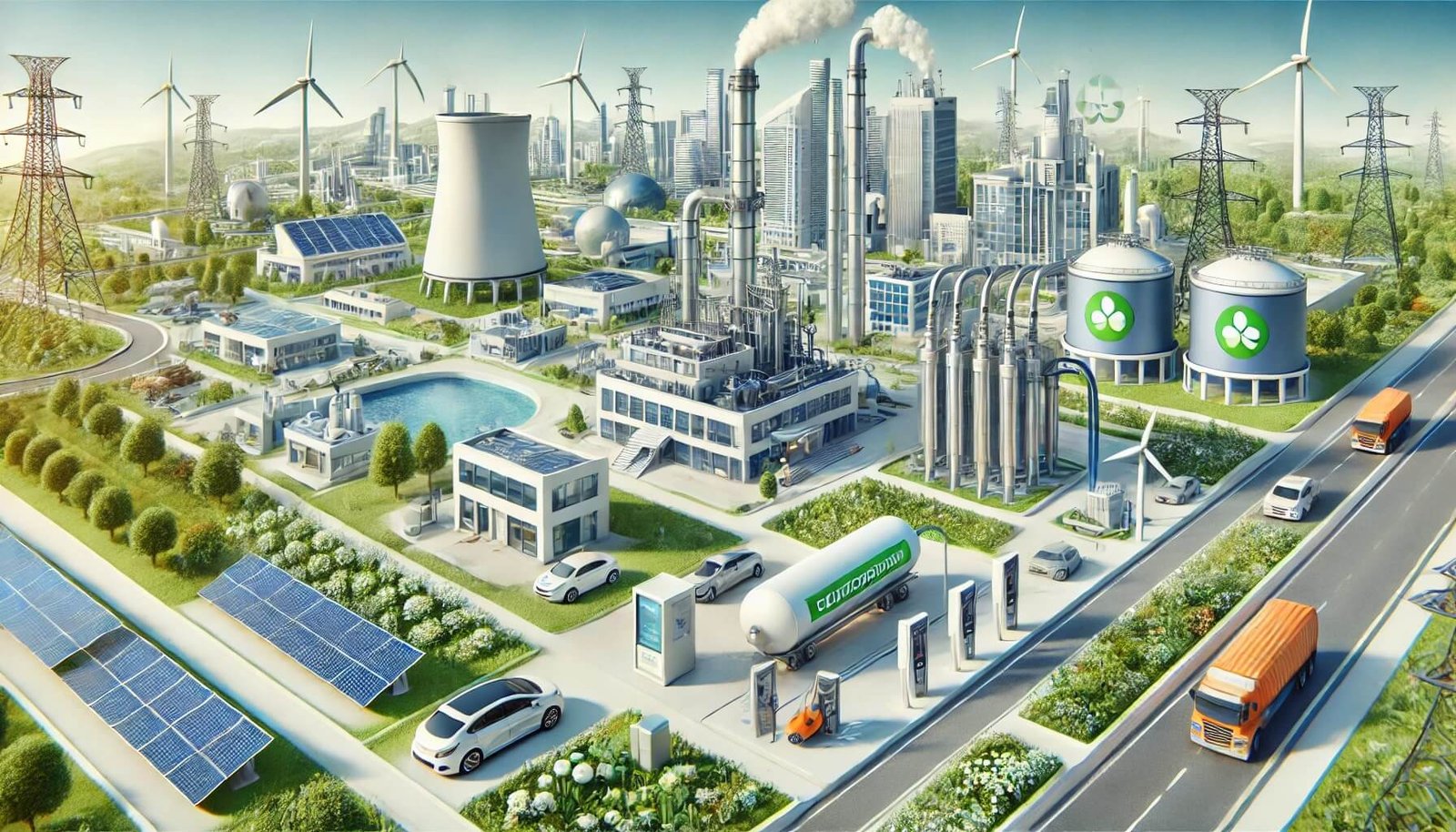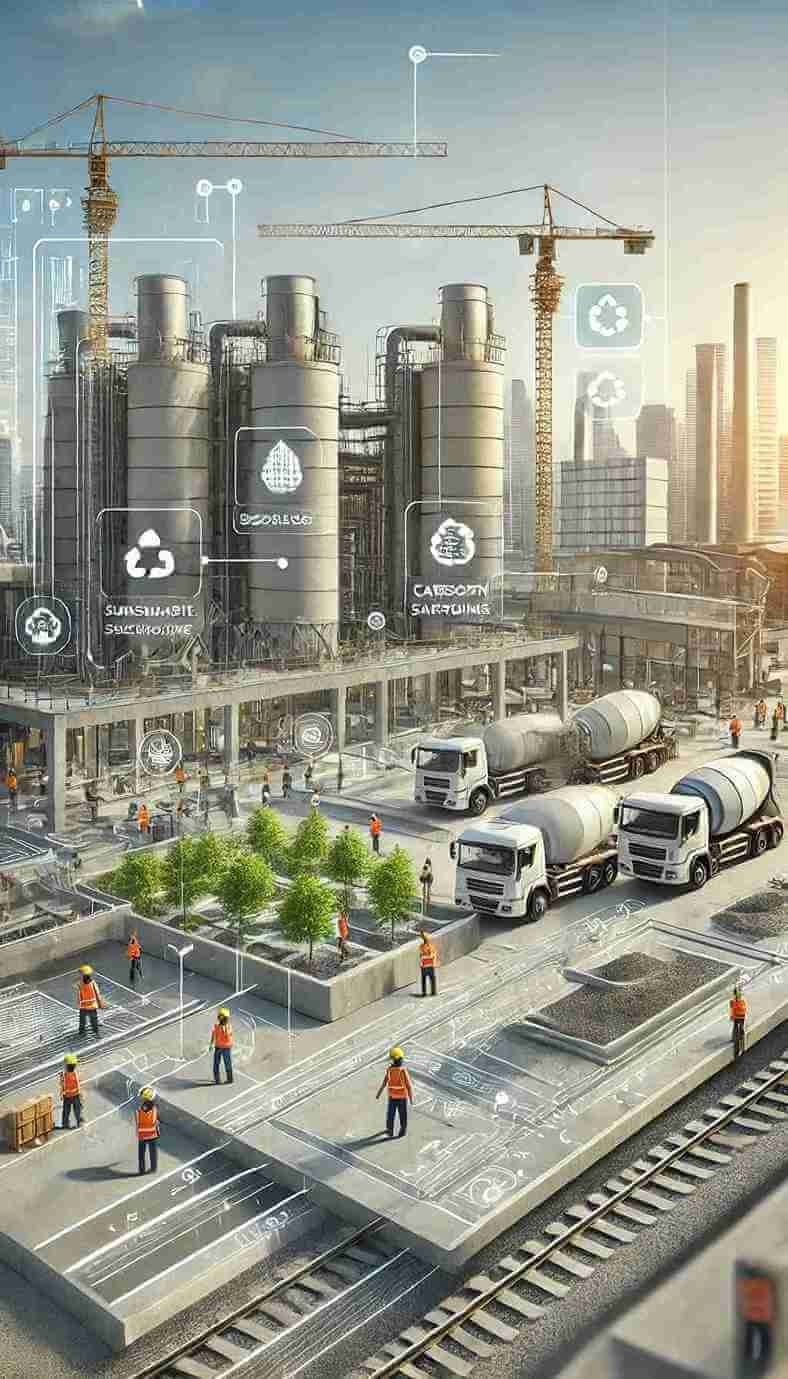
Decarbonization Technologies: Paving the Way for a Sustainable Future
Explore the critical decarbonization technologies, including carbon capture, renewable energy, green hydrogen, electric vehicles, and sustainable cement, that are shaping the future of sustainability and carbon reduction.
The global demand for sustainability is becoming more urgent as climate change accelerates. Low-carbon economy transition is essential now rather than optional. Decarbonization technologies, which aim to reduce or eliminate carbon dioxide (CO2) emissions across industries, are crucial for meeting climate goals and mitigating global warming. This article explores the most significant decarbonization technologies, including carbon capture, renewable energy, green hydrogen, electric vehicles (EVs), and sustainable cement, and highlights the progress and challenges associated with them.
What Are Decarbonization Technologies?
Decarbonization technologies refer to innovations that either reduce the carbon emissions produced by human activities or capture and store CO2 to prevent its release into the atmosphere. These technologies target sectors like energy, transportation, manufacturing, and agriculture, which are the largest contributors to global greenhouse gas emissions. Through decarbonization, industries can move towards net-zero emissions, a goal set by numerous countries and companies to combat climate change.
As the world grapples with rising temperatures, extreme weather events, and environmental degradation, the rapid adoption of decarbonization technologies is pivotal. By addressing carbon emissions across various sectors, these technologies can reduce the overall environmental impact and contribute to a sustainable future.

Fig: Industrial plant with advanced carbon capture systems
Key Technologies
Carbon Capture and Storage (CCS): Carbon Capture and Storage (CCS) is one of the most important decarbonization technologies in the industrial sector. It involves capturing CO2 emissions produced during industrial processes (such as power generation or cement manufacturing) and storing them in geological formations underground. CCS offers a solution for sectors that are difficult to decarbonize, such as cement production and steel manufacturing.
Despite its potential, CCS faces challenges, including high costs and limited storage capacity. However, ongoing advancements in CCS technology, supported by government incentives and corporate investment, are improving its efficiency and scalability.
The global implementation of CCS can significantly reduce emissions in regions reliant on fossil fuels, such as parts of Europe, the US, and China.
Renewable Energy: One of the most straightforward paths to decarbonization is the transition to renewable energy sources. Solar, wind, hydroelectric, and geothermal power are all key players in replacing fossil fuels like coal, oil, and natural gas. Renewables offer an abundant, sustainable, and low-emission source of power.
In 2020, renewable energy accounted for nearly 29% of global electricity generation, with solar and wind energy leading the charge.
As technology improves and costs continue to decline, renewable energy is poised to become the dominant form of power generation in the coming decades. The widespread adoption of solar panels, wind turbines, and hydropower is expected to play a central role in reducing emissions from electricity generation.
Additionally, the development of offshore wind farms and large-scale solar plants provides an opportunity for countries to tap into renewable resources that were previously underutilized. The energy transition is critical for reducing emissions, especially when paired with energy storage solutions that can provide stable, reliable power.

Fig: Hydrogen production facility powered by renewable energy
Green Hydrogen : Green hydrogen, produced through electrolysis powered by renewable energy, is a promising technology that can significantly decarbonize hard-to-electrify sectors like heavy industry and long-distance transportation.
Green hydrogen is particularly beneficial in industries such as steel manufacturing, where it can replace coal in the production of iron. Moreover, hydrogen can serve as a fuel for vehicles that are difficult to electrify, such as ships, trucks, and airplanes. While green hydrogen is still in its early stages, its potential to revolutionize the global energy market has sparked increasing investment from both governments and private companies
Electric Vehicles (EVs)
The transition to electric vehicles is essential for reducing carbon emissions from the transportation sector, one of the largest contributors to global greenhouse gas emissions. EVs, powered by clean electricity, produce zero tailpipe emissions, unlike their gasoline and diesel counterparts. As EV technology improves, they are becoming more affordable and accessible to consumers.
In 2020, the global electric vehicle market reached 10 million cars, and the adoption rate is expected to rise exponentially over the next decade. Governments worldwide are supporting the adoption of EVs through incentives, such as tax rebates and subsidies, while automakers are ramping up production of electric cars and trucks.
The integration of EVs into the grid will also encourage the development of smart charging infrastructure, which can help balance electricity demand and support renewable energy integration. EVs are not only part of the solution for reducing emissions in transportation but also a key enabler of the broader shift to cleaner energy systems.
Sustainable Cement: Cement production is responsible for approximately 8% of global CO2 emissions, making it a critical target for decarbonization efforts. Sustainable cement technologies aim to reduce the carbon intensity of cement manufacturing by using alternative materials and processes.
One approach is the development of low-carbon cements made from materials like fly ash, slag, and limestone calcined clay. Another promising innovation is carbon capture integration in cement plants, where CO2 emissions are captured and stored during production. While scaling these technologies remains a challenge, they offer significant potential to reduce emissions from the construction industry, which is one of the largest consumers of cement
Additionally, researchers are exploring the use of bio-based materials and alternative binders in cement production, which could further reduce the carbon footprint of concrete and other building materials.

Fig: Construction site showcasing innovative sustainable cement technologies
Challenges in Scaling this Technology
While decarbonization technologies show great promise, their widespread implementation faces several hurdles. High initial costs, limited infrastructure, and regulatory challenges are major barriers to scaling these technologies globally. The development of carbon capture facilities, green hydrogen production plants, and renewable energy systems requires significant investment and long-term planning.
In addition, the integration of these technologies into existing infrastructure is not always straightforward. For example, transitioning to renewable energy in regions reliant on coal-fired power plants requires significant changes in the energy grid, which can be costly and time-consuming. Furthermore, the social and political landscape can impact the speed at which these technologies are adopted. Strong governmental policies and international cooperation are crucial for driving large-scale decarbonization efforts.
The Path Forward for Decarbonization
The future of decarbonization technologies is promising but will require continued investment, innovation, and global collaboration. By integrating carbon capture, renewable energy, green hydrogen, electric vehicles, and sustainable cement, countries can achieve their net-zero emissions targets while continuing to grow economically.
Governments must prioritize policies that promote the adoption of these technologies, such as carbon pricing, clean energy incentives, and stricter emissions regulations. Public-private partnerships will also play a key role in accelerating the development and deployment of these technologies. As we continue to invest in research and development, the technologies we rely on today will become more efficient, cost-effective, and accessible to communities worldwide.
The road to a low-carbon future is challenging, but decarbonization technologies provide the tools necessary to build a sustainable world for future generations. Through innovation, collaboration, and commitment, we can ensure a cleaner, greener future for the planet.




This is a topic close to my heart cheers, where are your contact details though?